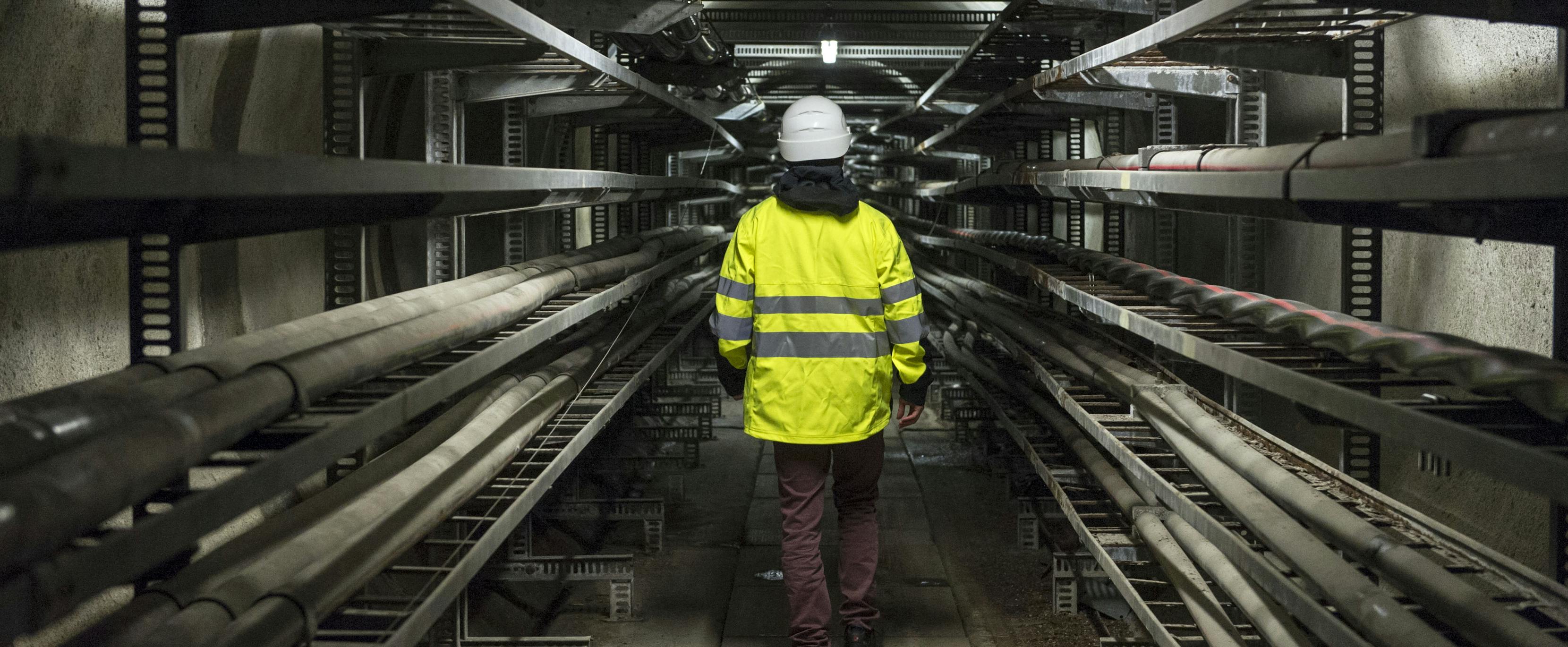Grid project Gotthard

No other tunnel connection characterises Switzerland more than the one which runs through the Gotthard. The opening of the first 15 km-long Gotthard railway tunnel in 1882 marked the beginning of an era filled with engineering masterpieces. In 2016, Switzerland built on this glorious past by opening the Gotthard Base Tunnel, which at 57 km is the world's longest railway tunnel. However, not only railway tracks pierce their way through the Saint-Gotthard Massif, but roads too. A second tunnel is planned for construction next to the Gotthard Road Tunnel, which was opened in 1980. As a multifunctional infrastructure, this also promises to be a masterpiece of engineering.
Cabling the Gotthard line
An extra-high voltage line has spanned the Gotthard since 1933. Part of this line has reached the end of its service life and needs to be renovated due to its age. The complete renovation of the line that Swissgrid is planning to carry out coincides with the scheduled construction of the second Gotthard road tunnel. Swissgrid and the Federal Roads Office (FEDRO) recognised the potential for a technical synergy between these two projects and coordinated their efforts at an early stage. This resulted in their joint design for Switzerland's first bundling project involving a national road tunnel and an extra-high voltage line.
The project envisages the construction of a service duct (WELK) under the road tunnel through which a 220 kV-line can be pulled. This type of service duct differs from underground cabling in a conduit block because the cable conduits are not encased in concrete, making them more easily accessible for maintenance work. The safety of this system is a top priority for Swissgrid. As the schematic diagram shows, the WELK will run under the hard shoulder of the road and will be separated from the FEDRO technical channel alongside it. This will protect the line should a fire break out or a similar event occur in the road tunnel. The valid limits for emissions in accordance with the Ordinance on Protection Against Non-Ionising Radiation (NISV) are also complied with throughout, even in cases where people have to leave their vehicles on the hard shoulder. A specially designed ventilation system will dissipate the heat generated by the cables in the WELK. This project will thus make the longest (around 18 km) cabling of an extra-high voltage line in Switzerland possible, allowing Swissgrid to gain valuable experience for future infrastructure bundling projects. In addition, the impact on the landscape at the Gotthard will be reduced, and the strategically important Gotthard line will be made ready for the future – and all this will be realised in an economically efficient manner.
More bundling projects
The Innertkirchen – Ulrichen grid project, which aims to replace and increase the voltage of the extra-high voltage line over the Grimsel Pass, is currently undergoing the federal government's sectoral plan procedure. Swissgrid has proposed a range of possible corridors along which it will be possible to establish a route with a certain transmission technology – overhead line or underground cable – during the further course of the project. These are now being discussed by an advisory group set up by the Swiss Federal Office of Energy (SFOE) and evaluated in terms of their impact on space, the environment, technology and costs. One sub-variant is the multifunctional Grimsel railway tunnel, which would be used jointly by the railway and the extra-high voltage line.
Infrastructure bundling
Given the large number of tunnels in Switzerland and the frequently expressed need for more extra-high voltage lines to be cabled, bundling these and other infrastructures together would seem to make sense. For this reason, the Federal Department of the Environment, Transport, Energy and Communications (DETEC) has systematically examined possibilities for bundling infrastructures in its planning ever since May 2019. DETEC investigated the technical, operational and safety requirements for these kinds of projects in its study «Clarification of fundamental issues for the bundling of transmission lines with national roads and railway lines».
Swissgrid takes its social responsibility seriously. For each project in which an extra-high voltage line will be built (known as a grid project), it draws up different variants that are technically feasible and suitable for approval in terms of line routing and technology. These are then examined by a monitoring group before the SFOE makes a recommendation to the Federal Council. At this point, the Federal Council selects a variant, which is in turn implemented by Swissgrid. Swissgrid is aware of the innovative nature and advantages of bundling infrastructures and takes account of both the federal requirements and the DETEC study in this respect when drawing up the variants. For each grid project, the monitoring group decides on an individual basis whether the synergy potential of bundling infrastructures outweighs the technical, operational, economic and spatial planning aspects in an overall assessment.








